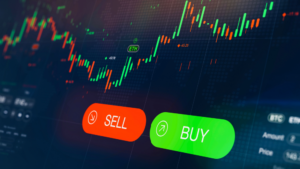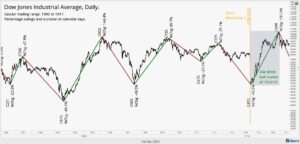EquiLend’s Nancy Allen, Head of Data & Analytics Solutions, sat down with The Hedge Fund Journal to discuss Orbisa’s leading securities lending data platform for buy-side market participants while taking a deep dive into the Orbisa dataset, comprised of USD $30 trillion in lendable assets of which around USD $2.5 trillion is on loan.
EquiLend is a leading capital markets fintech company founded in 2001, which offers a wide suite of technology and data solutions for the financing industry – specifically securities financing, including trading, regulatory compliance, post-trade and data and analytics services.
Its award-winning data business began in 2012 with the flagship DataLend platform, which is geared to wholesale players such as beneficial owners, agent lenders and broker dealers. The first foray into the buy-side came in 2021 with the launch of Orbisa, a leading securities lending data platform for hedge funds and other buy-side players. “Our wholesale data has now been transformed into a data and analytics solution for the buy side,” says Nancy Allen, who heads EquiLend’s Data & Analytics Solutions division.
Orbisa has generated datasets curated to hedge funds and the broader buy-side community based on data derived from various datasets, some of which are exclusively sourced from the firm’s market activity.
In addition to Allen, Orbisa’s seasoned and hedge fund savvy team includes:
- Mike Doyle, Director of Sales North America, who previously managed hedge fund relationships at some of the largest prime brokers including BAML, Goldman Sachs and Morgan Stanley;
- Grant Davies, Director of Sales EMEA, a securities lending, swaps and collateral management expert with experience from BNY Mellon, J.P. Morgan, HSBC, Goldman Sachs and iShares;
- Dimitri Arlando, Head of Data & Analytics Solutions EMEA, former BNY Mellon, State Street and Northern Trust securities lending relationship management executive;
- Michael Gentile and Matthew Bernard, Orbisa consultants, who previously co-founded a hedge fund data management company that was acquired back in 2016; and
- a team of data and analytics specialists across EquiLend’s global locations
The appeal is broad: “Hedge fund users of the data include those managing quantitative global macro, equity long/short, equity market neutral, credit long/short, convertible bond arbitrage and merger arbitrage strategies. Clients are in all regions, and they range in size from start-ups to multi-billion- dollar funds,” says Allen.
The most obvious use case is keeping abreast of the cost and availability to borrow for existing and potential short positions, and gauging the risk of “short squeezes”, which have recently spelled the nemesis of some funds and generated triple-digit annual returns for others. “Indeed, the data can also feed directly into the investment process and help to generate buy and sell signals and construct portfolios,” points out Allen, who also serves as chair of the New York chapter of the Women in Securities Finance (WISF) organisation.
Data coverage, sourcing, cleaning and validation
The Orbisa data set comprises USD $30 trillion of physical lendable securities, including USD $8 trillion of fixed income securities, of which around USD $2.5 trillion (USD $1.5 trillion of fixed income) is on loan. The data coverage is global, including activity from all active lending markets worldwide. Equity securities cover all market capitalisations, including some small caps and micro caps that are lent – or could be. The fixed income securities are mainly government bonds and corporate bonds, including investment grade and high yield, which can be lent through GRMA repos or GMSLA stock loans. The data is sliced and diced by asset, region, sector, company and issuer.
“We believe that our data coverage is as close to comprehensive as is possible, based on flows and comparisons. We have specifically received positive client feedback on Asian market coverage, where lending data is otherwise hard to come by, confirming our own data,” says Allen.
The data comes from a unique combination of sources from across the EquiLend ecosystem: client-submitted data, trading data from the NGT (Next Generation Trading) trading platform for electronic trading of equities and fixed income, and post-trade data collected every 15 minutes from the client base. Clients not only supply a portion of the raw data, but also help to shape how the output is designed: “We have a symbiotic relationship with clients. Our product team consults clients to understand their needs, and our specialist team works towards specific client needs for optimising alpha and returns in the lending market,” says Allen. Clients appreciate the quality of the data: “Clean and accurate data is critical, and we have had positive feedback. We invest in data validation and cleansing, which includes measures to avoid double counting,” she adds.
Metrics monitored
This data generates metrics gauging changing availability, scarcity and the cost of borrowing a security. Key metrics include lendable inventory value and quantity, measured through unencumbered long positions, as well as loan value, availability and utilisation rates – the amount of inventory being lent, drilling down to the individual security. These can provide an early warning for squeezes: “As securities approach 100% utilisation, fees can increase,” says Allen. Hedge funds wanting to avoid “overcrowded” shorts may heed daily short interest measures on loan quantity versus publicly available float. Some short squeezes arise from shortages of stock for closing out shorts, and here days to cover (on loan quantity against 30-day average trading volume) may be informative. Fee levels are shown in the Orbisa rate, which indicates borrow rates for the buy-side, brokers and wholesale brokers. Fee trends in terms of long-term and short-term fee momentum and volatility are monitored. “Depth” of borrowers and lenders means the number of each, which may also give clues about market dynamics.
Lending market flashpoints and heatmaps vary between regions. In 2022, the largest sources of equity lending revenue in the US included so called “meme stocks” such as Lucid Group, Beyond Meat, GameStop and AMC. In contrast, in the EMEA region, the top ten sources of lending revenue were dominated by blue chip large cap stocks, such as Total, Axa, ASML and BNP Paribas. Average lending costs differ between markets: for instance, last year equity borrow rates in Sweden cost roughly twice as much on average as in France, Germany, United Kingdom and Switzerland, while lending costs in Asia Pacific are generally higher than either the Americas or EMEA. In Asia Pacific, South Korea and Taiwan taken together provided eight of the top ten equity lending revenue stocks in 2022, when short sellers were focused on technology cycles and valuations.
Repos and voting
The claw-back of stock borrow can ruin a short trade. Lenders may repo securities for various reasons, such as exercising proxy voting on equities. “Beneficial owners understand the opportunity costs of not voting. They partner with agent lenders to make sure they can recall to vote,” says Allen.
Security borrow quantities and prices can be fixed for a term or may be open – and can then fluctuate. This is reported, as are re-rates, which show
—
Originally Posted June 23, 2023 – Orbisa Actionable Securities Lending Intelligence: The Hedge Fund Journal Issue 161
Disclosure: Orbisa
ORBISA (the “Firm”) is not registered as an investment advisor or otherwise in any capacity with any securities regulatory authority. The information contained, referenced or linked to herein is proprietary and exclusive to the Firm, does not constitute investment or trading advice, is provided for general information and discussion purposes only and may not be copied or redistributed without the Firm’s prior written consent. The Firm assumes no responsibility or liability for the unauthorized use of any information contained, referenced or linked to herein. © 2023 EquiLend Holdings LLC. All rights reserved.
Disclosure: Interactive Brokers
Information posted on IBKR Campus that is provided by third-parties does NOT constitute a recommendation that you should contract for the services of that third party. Third-party participants who contribute to IBKR Campus are independent of Interactive Brokers and Interactive Brokers does not make any representations or warranties concerning the services offered, their past or future performance, or the accuracy of the information provided by the third party. Past performance is no guarantee of future results.
This material is from Orbisa and is being posted with its permission. The views expressed in this material are solely those of the author and/or Orbisa and Interactive Brokers is not endorsing or recommending any investment or trading discussed in the material. This material is not and should not be construed as an offer to buy or sell any security. It should not be construed as research or investment advice or a recommendation to buy, sell or hold any security or commodity. This material does not and is not intended to take into account the particular financial conditions, investment objectives or requirements of individual customers. Before acting on this material, you should consider whether it is suitable for your particular circumstances and, as necessary, seek professional advice.






























Join The Conversation
If you have a general question, it may already be covered in our FAQs. If you have an account-specific question or concern, please reach out to Client Services.